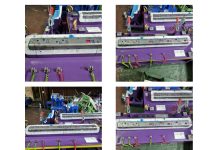An Anonymous Customer Story Concerning Market
Assumptions in Japan vs. Europe
[dropcap]I[/dropcap]n a land where AutoForm is considered an obscure tool Hisashi Takizawa, Technical Manager AutoForm Japan, describes the complexities of demonstrating the use of AutoForm to customers who not only disbelieve the power of AutoForm but even consider it a strange and somewhat alien tool.
Welcome fans to AutoForming World,
Many of our assumptions are turned on their head in Japan. It is a foreign land with another mentality entirely. ‘One of the questions Japanese customers ask me is “Why do so many European OEMs use AutoForm to predict surface defects?” as if they can’t understand it’ says Taki, who added ‘What they really want to know is what different methodology is at work in predicting those defects and they’d like to surgically open their brains to figure out this other mentality in Europe. Indeed the questions against what seems obvious to us often have no answer. The mentality is just so different and AutoForm even seems to be some type of alien technology over here.’

But Taki is currently celebrating a huge win for AutoForm in Japan, brining over one a major OEM there, which regularly makes use of forming simulation software. For the sake of this anonymous story we shall call this customer ‘Customer X’ as per all our anonymous stories.
Anonymous Customer Story 3:
Previous to working at AutoForm Taki had worked closely with a leading engineer at the OEM. Their exchanges continued over six years until 2017 when the customer decided to increase use AutoForm.
‘Until that point the OEM in question did the majority of its simulation work with a different software. However, the customer was following a delayed process of operations, with its press-engineer needing to order drafts and modifications from a CAE engineer who would then send the tooling designs. This gave room for opportunity as AutoForm could entirely eliminate that bottleneck in their process. Now something interesting happened.’

Taki swept in to do a demonstration, saying ‘At AutoForm we are going against the grain of popular assumptions within the industry. Given this chance I personally ran the demonstrations at Customer X’s tool shop. We worked with surface defects seen on outer panels, including door outer, front fender and body side outer panels. The press-engineer saw the immediate advantage, with particular interest and surprise at our very easy setup and easy operation. In particular the fast response time caught his eye. The customer still uses our competitors’ software, however at a reduced capacity, now making use of AutoForm for formability and springback calculations.’
The reason why this is such a win for AutoForm is that Customer X has always had a long standing relationship with our software competitor, who have built a strong relationship of trust in Japan. ‘
Taki then described the process of change. ‘During my demonstrations Customer X insisted on showing the results of the competitor software. But as a proficient user myself I was able to show them how quick and easy our set up is, and that indeed our results are accurate, which is the major question in Japan. That is not an issue in Europe, where everyone already knows. So at the beginning the customer ran the competitors’ software and AutoForm simulations side by side. Over time they realized they can trust in AutoForm and now run several of their tasks entirely within our solution. Most of all, if you consider the time they lost in ordering and waiting for a CAE engineer to send modifications to the tooling design then you can imagine what that improved efficiency means to the customer.’
Taki ended with ‘The current status of Japan is still one of hesitation. They are comfortable using their own methods. But many in wish to delve more into the particular area of predicting and correcting surface defects with CAE. Yet AutoForm is able to accurately predict those surface defects, which goes against the perception of what AutoForm can do in this country. What really gets them is that our default element size is very big big – as widely used for regular feasibility analysis, whereby they then assume it’s not possible to calculate such small geometries with big element size to predict the curvature for surface defect.’
Thank you fans for reading our blog, don’t forget to subscribe for more!













